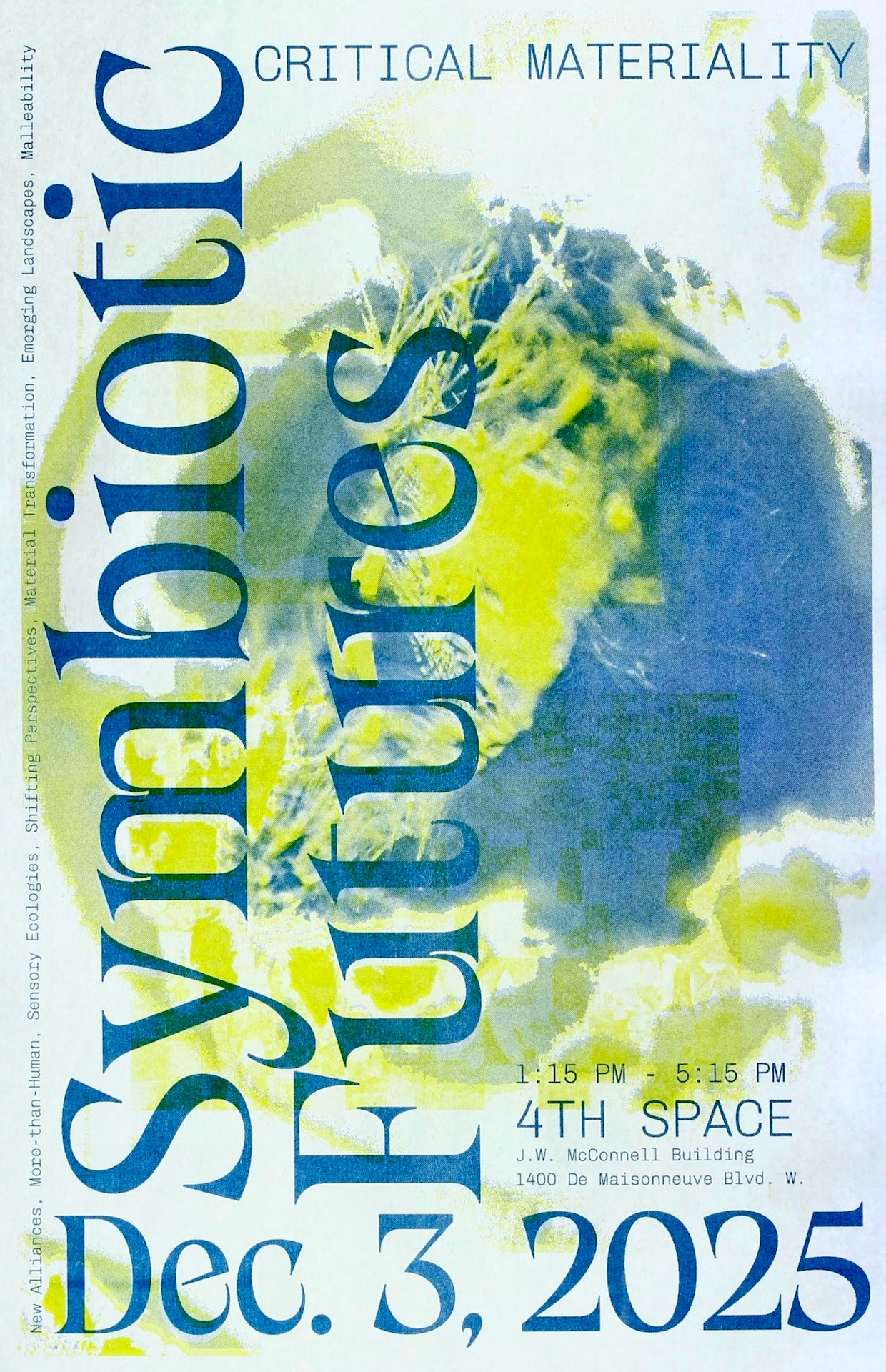Date & time
1 p.m. – 5 p.m.
This event is free.
J.W. McConnell Building
1400 De Maisonneuve Blvd. W.
4TH SPACE
Yes - See details

How might artists and designers reduce environmental footprints by reframing the life cycles of materials?
Symbiotic Futures involves the research of artists and designers examining the materials that shape our environments. This pop-up exhibition questions how to shift perceptions around what materials have or hold value in order to create new imaginaries of care and sustainability that subvert and critique consumerism and capitalist agendas. Paying close attention to our natural environment, these investigations incorporate natural materials, including soil, wood, plants, water, light, wind, and sound, and reimagine these elements as materials for art and design.
These research projects question ideas of scale, post-consumer waste, sound pollution, decay, memory, soil compositions, pigments, dyes, and biomaterials. The result is a circular, multisensory, and ethically grounded design practice that treats making as an ongoing exchange between humans, living systems, and the environments they share. As artists considering critical materiality, we prioritize our human responsibility to the natural environment as a guiding research principle.
How can you participate? Join us in person or online by registering for the Zoom Meeting or watching live on YouTube.
Have questions? Send them to info.4@concordia.ca
Homemade investigates the process of creating ink using materials from your own home, comparing their texture and colour to store-bought art supplies.
Sharp Stigma Disposal is an excuse to start a conversation about waste and litter from drug use and harm reduction, in addition to the stigma around it. It contrasts the typical yellow biohazard sharp disposal containers while bringing to light the potential of waste material to become something new in the domestic space.
Materiality of Care explores the intersections of natural pigments, artistic practices, and grief literacy. Encompassing quilting and stitching with painting, this cloak considers how we carry grief and questions how we might share grief collectively.
Bodies of Salt explores desalination brine and investigates how salt waste can be reused to create sustainable and dynamic design solutions and aesthetics.
Modularity in More-than-Human Interfaces investigtes new methods for fabricating urban facades that transform inert surfaces into biocompatible interfaces for more-than-human organisms such as lichen, fungi, and moss.
Luminature is an anthropomorphic vase seated gracefully in a serene pose, part human, part object. Its sculpted crossed legs are composed of biomaterials, and its translucent form embodies the affordances of sustainability inspired by organic waste. Iterated as both human and inanimate objects, forms become one in a new ecological landscape.
UNTITLED SOUND 1 delves into the exploration of the sonic potential of waste materials. From unwanted cut-offs from the furniture industry, an experimental instrument creates new sounds and tonalities.
Residual Matter explores how urban soil contamination transforms plant life and natural pigment processes, merging environmental research and art to create sustainable inks and biomaterials from polluted ecologies.
E-SISYPHUS explores new functional purposes for obsolete technology and their circuitry, assigning a new.
Firewood is a material study that explores the potential for a creative relationship between wood and fire. Foraged wood is used as a building material and treated with fire for both practical and aesthetic purposes.
Submerged Sightlines: An exploration of visibility and materiality presents a threshold interface between human and aquatic worlds, revealing foreign landscapes normally concealed beneath the water's surface.
Unwoven: Restoring care to things woven is an unwoven lamp presenting textile waste not as intert but as a vibrant force, unraveling into continuous bloom.
© Concordia University